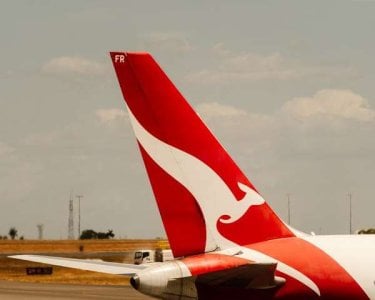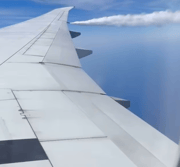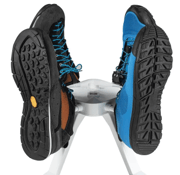Emergency crew responds after Qantas pilot falls ill. What happened?
By
Danielle F.
- Replies 0
It's not every day you hear about a drama unfolding in the cockpit of a commercial jet.
Yet, that's exactly what happened on a recent Qantas, which left many passengers none the wiser.
However, aviation insiders and experts have been abuzz with the news.
On Monday evening, Qantas flight QF804 took off from Canberra Airport just after 6 pm.
The flight, heading to Sydney, carried 113 passengers, eight crew members, and three pilots.
The journey was smooth and uneventful until its concluding moments.
Just after the Boeing 737 aeroplane touched down safely at Sydney's T3 terminal, a trainee pilot at the controls told his first officer he was feeling unwell.
Within seconds of landing, he fainted in the cockpit.
Thankfully, the flight was not a solo operation.
Alongside the trainee and first officer was an experienced check captain tasked with supervising the flight.
As soon as the trainee lost consciousness, the check captain took over, ensuring a safe taxi to the gate.
The aeroplane managed to land safely, with all passengers disembarking without any clue about the incident.
However, paramedics immediately tended to the trainee who fainted.
Aviation expert Peter Carter immediately weighed in on the situation.
According to Carter, the Director of Carter Capner Law, airline pilots are subject to some of the strictest medical standards in the world.
'Airline pilots must, in any event, undergo annual medical examinations by a designated aviation medical examiner (DAME),' Carter said.
If a pilot experiences a medically significant condition, they're required to ground themselves.
They also have to notify their examiner or the Civil Aviation Safety Authority (CASA) if their health issue has lasted more than seven days.
Should these medical conditions affect a pilot's licence?
Carter pointed out that a medical condition should not automatically disqualify a pilot.
However, CASA may impose restrictions or require further testing to ensure safety.
In the trainee pilot's case, they need to be recertified before flying out to the skies again.
Meanwhile, Qantas confirmed that all standard protocols were followed.
'Our pilots followed standard operating procedures when one pilot suffered a medical incident following landing in Sydney,' a Qantas spokesperson said.
'The safety and wellbeing of our passengers and crew is our priority, and we're supporting the individual following the incident.'
The Australian Transport Safety Bureau (ATSB) was notified about the incident.
However, after reviewing the reports, the bureau decided not to investigate the matter further.
'As reported to the ATSB, after a safe landing, and while the aircraft was stationary on the tarmac, the pilot flying felt unwell and was incapacitated for a short time,' an ATSB spokesperson said.
'Two other flight crew were in the cockpit, took control and taxied to the gate without incident,' a spokesperson said.
This was not the first time a medical emergency had occurred in the cockpit.
In 2023, a QantasLink flight from Sydney to Hobart faced safety risks when the first officer experienced symptoms similar to hypoxia during landing.
The ATSB later linked the incident to poor cabin air quality caused by a chlorine-like odour from the cockpit's air-conditioning vents.
Despite the scare, the flight landed safely.
The affected QantasLink aeroplane was retired later that year.
Stories like these can be unsettling, but they also highlight the rigorous safety protocols in place in the aviation industry.
Commercial flights are run by at least two qualified pilots.
In cases like training flights or long-haul journeys, three or more pilots are assigned to an aircraft.
If one pilot becomes incapacitated throughout the flight, another can immediately take over.
While it's natural to feel a bit uneasy after hearing aeroplane stories like this, commercial aviation remains one of the safest forms of travel.
The systems in place are designed to handle exactly these kinds of situations, and the fact that most passengers on QF804 did not notice anything was a testament to how well those systems work.

Have you ever experienced a medical emergency mid-flight before? Do stories like this make you more nervous about flying, or do you feel reassured by airline crews' professionalism? We would love to hear your thoughts and any stories you mave in the comments below.
MORE AVIATION NEWS: Job losses, cancelled routes, and refunds: Qantas’ latest move hits hard, but here’s what travellers can do next
Yet, that's exactly what happened on a recent Qantas, which left many passengers none the wiser.
However, aviation insiders and experts have been abuzz with the news.
On Monday evening, Qantas flight QF804 took off from Canberra Airport just after 6 pm.
The flight, heading to Sydney, carried 113 passengers, eight crew members, and three pilots.
The journey was smooth and uneventful until its concluding moments.
Just after the Boeing 737 aeroplane touched down safely at Sydney's T3 terminal, a trainee pilot at the controls told his first officer he was feeling unwell.
Within seconds of landing, he fainted in the cockpit.
Thankfully, the flight was not a solo operation.
Alongside the trainee and first officer was an experienced check captain tasked with supervising the flight.
As soon as the trainee lost consciousness, the check captain took over, ensuring a safe taxi to the gate.
The aeroplane managed to land safely, with all passengers disembarking without any clue about the incident.
However, paramedics immediately tended to the trainee who fainted.
Aviation expert Peter Carter immediately weighed in on the situation.
According to Carter, the Director of Carter Capner Law, airline pilots are subject to some of the strictest medical standards in the world.
'Airline pilots must, in any event, undergo annual medical examinations by a designated aviation medical examiner (DAME),' Carter said.
If a pilot experiences a medically significant condition, they're required to ground themselves.
They also have to notify their examiner or the Civil Aviation Safety Authority (CASA) if their health issue has lasted more than seven days.
Should these medical conditions affect a pilot's licence?
Carter pointed out that a medical condition should not automatically disqualify a pilot.
However, CASA may impose restrictions or require further testing to ensure safety.
In the trainee pilot's case, they need to be recertified before flying out to the skies again.
Meanwhile, Qantas confirmed that all standard protocols were followed.
'Our pilots followed standard operating procedures when one pilot suffered a medical incident following landing in Sydney,' a Qantas spokesperson said.
'The safety and wellbeing of our passengers and crew is our priority, and we're supporting the individual following the incident.'
The Australian Transport Safety Bureau (ATSB) was notified about the incident.
However, after reviewing the reports, the bureau decided not to investigate the matter further.
'As reported to the ATSB, after a safe landing, and while the aircraft was stationary on the tarmac, the pilot flying felt unwell and was incapacitated for a short time,' an ATSB spokesperson said.
'Two other flight crew were in the cockpit, took control and taxied to the gate without incident,' a spokesperson said.
This was not the first time a medical emergency had occurred in the cockpit.
In 2023, a QantasLink flight from Sydney to Hobart faced safety risks when the first officer experienced symptoms similar to hypoxia during landing.
The ATSB later linked the incident to poor cabin air quality caused by a chlorine-like odour from the cockpit's air-conditioning vents.
Despite the scare, the flight landed safely.
The affected QantasLink aeroplane was retired later that year.
Stories like these can be unsettling, but they also highlight the rigorous safety protocols in place in the aviation industry.
Commercial flights are run by at least two qualified pilots.
In cases like training flights or long-haul journeys, three or more pilots are assigned to an aircraft.
If one pilot becomes incapacitated throughout the flight, another can immediately take over.
While it's natural to feel a bit uneasy after hearing aeroplane stories like this, commercial aviation remains one of the safest forms of travel.
The systems in place are designed to handle exactly these kinds of situations, and the fact that most passengers on QF804 did not notice anything was a testament to how well those systems work.
Key Takeaways
- A Qantas trainee pilot fainted shortly after landing a Boeing 737 in Sydney with 113 passengers onboard.
- Paramedics treated the pilot, and all passengers disembarked without issue, with Qantas confirming standard protocols were followed throughout the incident.
- Aviation experts explained that pilots must undergo regular medical checks and would need to be recertified before flying again.
- The Australian Transport Safety Bureau was notified and added the event to its database but decided not to investigate further, as the situation was handled professionally.
MORE AVIATION NEWS: Job losses, cancelled routes, and refunds: Qantas’ latest move hits hard, but here’s what travellers can do next








